Themed collection Towards understanding and treating Alzheimer’s disease

Biological and pharmacological activities of amaryllidaceae alkaloids
This review discusses the recent developments on biological and pharmacological activities of amaryllidaceae alkaloids with IC50 or EC50 values since 2005, supporting the potential therapeutic possibilities for the use of these compounds.
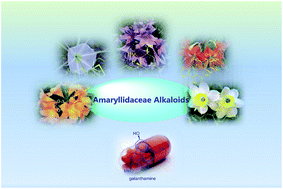
RSC Adv., 2015,5, 16562-16574
https://doi.org/10.1039/C4RA14666B
Drug-like chelating agents: a potential lead for Alzheimer's disease
This review systematically discusses the drug-like chelating agents for AD as well as their potential applications in the future.
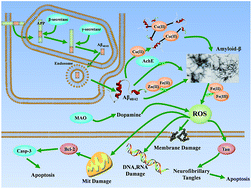
RSC Adv., 2014,4, 52088-52099
https://doi.org/10.1039/C4RA09193K
Biologically active isoquinoline alkaloids with drug-like properties from the genus Corydalis
Corydalis plants are rich sources of isoquinoline alkaloids with various biological activities as well as drug-like properties.

RSC Adv., 2014,4, 15900-15913
https://doi.org/10.1039/C3RA47944G
Recent developments in chemistry and biology of curcumin analogues
This review highlights the different chemical modifications done on curcumin, their structure–activity relationship and a comprehensive look at the current clinical status of its analogues.
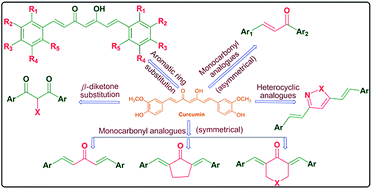
RSC Adv., 2014,4, 13946-13978
https://doi.org/10.1039/C4RA00227J
High-throughput metabolomics analysis discovers salivary biomarkers for predicting mild cognitive impairment and Alzheimer's disease
Mild cognitive impairment (MCI) confers an increased risk of developing Alzheimer's disease (AD).
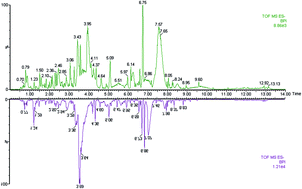
RSC Adv., 2016,6, 75499-75504
https://doi.org/10.1039/C6RA16802G
Metabolomics-based screening of salivary biomarkers for early diagnosis of Alzheimer's disease
Early diagnosis of Alzheimer's disease (AD) is an attractive strategy to increase the survival rate of patients.

RSC Adv., 2015,5, 96074-96079
https://doi.org/10.1039/C5RA19094K
Self-assembly of Cu(II) with amyloid β19–20 peptide: relevant to Alzheimer's disease
The Aβ19–20 peptide tends to self-assemble into well-ordered tubular structures under physiological conditions, while in the presence of equimolar Cu(II), they assembled into homogeneous microvesicles. The chelator can competitively bind to Cu(II) from the Cu(II)–Aβ19–20 complex, resulting in reforming of the peptide tubular structure.
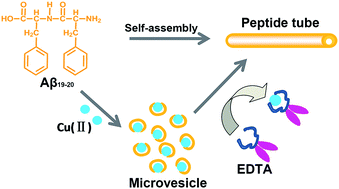
RSC Adv., 2014,4, 21840-21843
https://doi.org/10.1039/C4RA02758B
The role of caffeine as an inhibitor in the aggregation of amyloid forming peptides: a unified molecular dynamics simulation and experimental study
10 : 1 or more caffeine to SwP ratio can prevent the formation of β-sheet conformation.
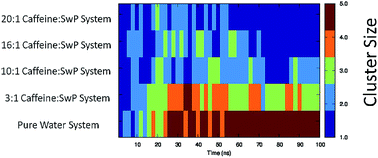
RSC Adv., 2016,6, 78548-78558
https://doi.org/10.1039/C6RA17602J
Low generation anionic dendrimers modulate islet amyloid polypeptide self-assembly and inhibit pancreatic β-cell toxicity
The self-assembly and cytotoxicity of the amyloidogenic peptide IAPP can be controlled with low generation anionic dendrimers.
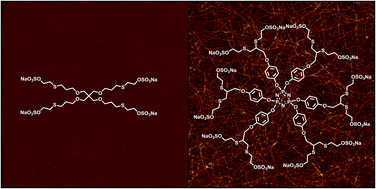
RSC Adv., 2016,6, 76360-76369
https://doi.org/10.1039/C6RA15373A
Tacrine-allyl/propargylcysteine–benzothiazole trihybrids as potential anti-Alzheimer's drug candidates
Eight novel trihybrids as potential anti-Alzheimer's drugs showed high AChEI and anti-Aβ aggregation capacity, moderate anti-ROS activity and low MAO inhibition.
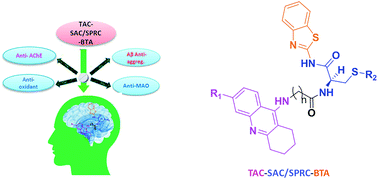
RSC Adv., 2016,6, 53519-53532
https://doi.org/10.1039/C6RA03455A
Radiolabeled pyridinyl analogues of dibenzylideneacetone as β-amyloid imaging probes
In continuation of our investigation of the dibenzylideneacetone scaffold as Aβ imaging probes, a series of derivatives containing pyridine rings with lower lipophilicity was synthesized and evaluated.
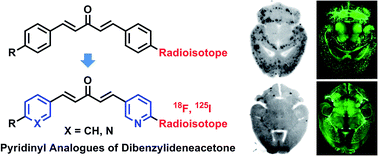
RSC Adv., 2016,6, 44646-44654
https://doi.org/10.1039/C6RA05168E
Cetyltrimethylammonium bromide (CTAB) promote amyloid fibril formation in carbohydrate binding protein (concanavalin A) at physiological pH
Low concentration of CTAB provoked cross β-sheet formation whereas high concentrations of CTAB direct to alpha helix induction in Con A.
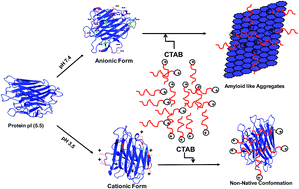
RSC Adv., 2016,6, 38100-38111
https://doi.org/10.1039/C6RA03707K
Fluorescent gold nanoclusters for in vivo target imaging of Alzheimer's disease
Fluorescent gold nanoclusters for in vivo target imaging provides a new way for rapid and early diagnosis of Alzheimer's disease.
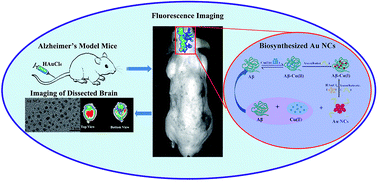
RSC Adv., 2016,6, 30081-30088
https://doi.org/10.1039/C6RA01027J
Understanding the structural requirements of cyclic sulfone hydroxyethylamines as hBACE1 inhibitors against Aβ plaques in Alzheimer's disease: a predictive QSAR approach
Beta (β)-site amyloid precursor protein cleaving enzyme 1 (BACE1) is one of the most important targets in Alzheimer's disease (AD), which is responsible for production and accumulation of beta amyloid (Aβ).
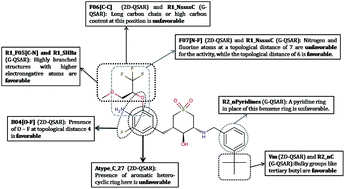
RSC Adv., 2016,6, 28171-28186
https://doi.org/10.1039/C6RA04104C
Synthesis and evaluation of neuroprotective 4-O-substituted chrysotoxine derivatives as potential multifunctional agents for the treatment of Alzheimer's disease
A series of 4-O-substituted chrysotoxine (CTX) derivatives were designed, synthesized and evaluated as multifunctional agents for the treatment of Alzheimer's disease (AD).
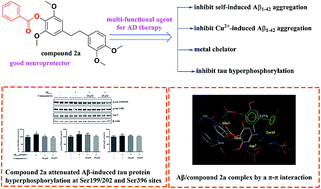
RSC Adv., 2016,6, 22827-22838
https://doi.org/10.1039/C5RA21313D
Bisphenol analogues differently affect human islet polypeptide amyloid formation
Bisphenols (BPs) are widely used in the production of plastic material, misfolded human islet amyloid polypeptide (hIAPP) is a causal factor in diabetes. We demonstrated BPs analogues show different effects on hIAPP amyloid formation.
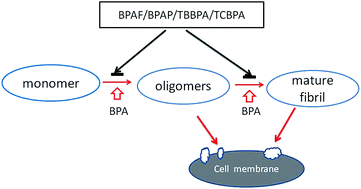
RSC Adv., 2016,6, 7239-7248
https://doi.org/10.1039/C5RA21792J
Design, synthesis and evaluation of clioquinol–ebselen hybrids as multi-target-directed ligands against Alzheimer's disease
A novel series of compounds obtained by fusing the metal-chelating agent clioquinol and the antioxidant ebselen were designed, synthesized and evaluated as multi-target-directed ligands against Alzheimer's disease (AD).

RSC Adv., 2016,6, 7139-7158
https://doi.org/10.1039/C5RA26797H
Synthesis and evaluation of 6-substituted 3-arylcoumarin derivatives as multifunctional acetylcholinesterase/monoamine oxidase B dual inhibitors for the treatment of Alzheimer’s disease
Compounds 5o and 5p were both multifunctional hAChE/hMAO-B dual inhibitors for the treatment of AD.
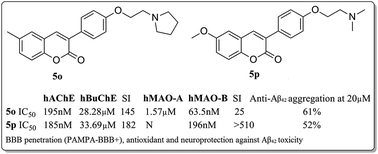
RSC Adv., 2015,5, 104122-104137
https://doi.org/10.1039/C5RA22296F
Amyloid fibrils as rapid and efficient nano-biosorbents for removal of dye pollutants
Amyloid fibrils: promising nano-biosorbents for removing dye pollutants. These protein nanofibers have special structures with exposed net +/−charges and hydrophobic regions for rapid and efficient adsorption of various dyes.
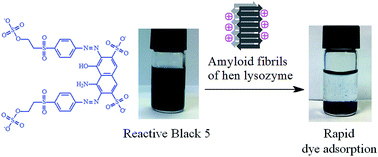
RSC Adv., 2015,5, 90022-90030
https://doi.org/10.1039/C5RA17182B
Multifunctional 3-Schiff base-4-hydroxycoumarin derivatives with monoamine oxidase inhibition, anti-β-amyloid aggregation, metal chelation, antioxidant and neuroprotection properties against Alzheimer's disease
These 3-Schiff base-4-hydroxycoumarin derivatives were multifunctional agents with monoamine oxidase inhibition, anti-β-amyloid aggregation, metal chelation, antioxidant and neuroprotection properties against Alzheimer's disease.
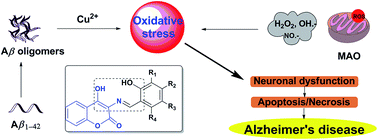
RSC Adv., 2015,5, 70395-70409
https://doi.org/10.1039/C5RA13594J
The mechanisms of flavonoids inhibiting conformational transition of amyloid-β42 monomer: a comparative molecular dynamics simulation study
Flavonoids can bind Aβ42 to inhibit the aggregation of Aβ42 monomer.
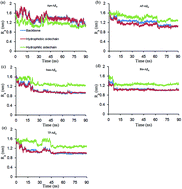
RSC Adv., 2015,5, 66391-66402
https://doi.org/10.1039/C5RA12328C
Extrinsic plasmalogens suppress neuronal apoptosis in mouse neuroblastoma Neuro-2A cells: importance of plasmalogen molecular species
Plasmalogen, especially those having 22:6, suppressed neuronal apoptosis via death receptor and mitochondrial pathways. These mechanisms of action of plasmalogen may be responsible for regulation of membrane functions and second messenger production.
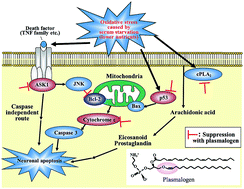
RSC Adv., 2015,5, 61012-61020
https://doi.org/10.1039/C5RA00632E
Curcumin induces structural change and reduces the growth of amyloid-β fibrils: a QCM-D study
Curcumin inhibited Aβ fibril growth through leading to the structural conversion of the growing fibril to a more loosely constructed aggregate.
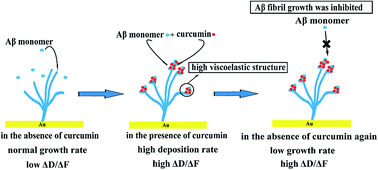
RSC Adv., 2015,5, 30197-30205
https://doi.org/10.1039/C5RA02314A
Ruthenium complexes as inhibitors of human islet amyloid polypeptide aggregation, an effect that prevents beta cell apoptosis
Herein we show that ruthenium complexes could inhibit fibrosis of hIAPP and protect the hIAPP-induced cell damage by suppressing ROS generation, indicating the application potential of the complexes in treatment of T2DM by targeting hIAPP.
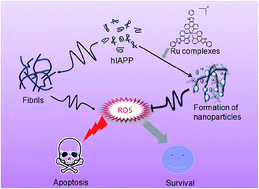
RSC Adv., 2015,5, 17405-17412
https://doi.org/10.1039/C4RA15152F
Design of a structural framework with potential use to develop balanced multifunctional agents against Alzheimer's disease
A series of small molecules had been designed, synthesized, and evaluated as multifunctional ligands against Alzheimer's disease (AD).
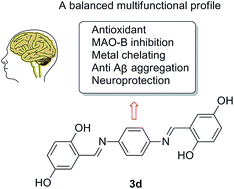
RSC Adv., 2015,5, 14242-14255
https://doi.org/10.1039/C4RA10692J
Inhibition of insulin amyloid fibril formation by ferulic acid, a natural compound found in many vegetables and fruits
The effect of Ferulic acid on insulin amyloid fibril formation has been studied using different biophysical methods in vitro.

RSC Adv., 2014,4, 62326-62336
https://doi.org/10.1039/C4RA11291A
Zn2+, Cd2+ and Cu2+ mediated formation of amyloid like fibrils by the monomers of β-sheet rich peanut agglutinin
Formation of amyloid like nano fibrils of pea nut agglutinin that is rich in beta sheet secondary structure under thermal conditions in the presence of Zn2+, Cd2+ and Cu2+, and their affinity to contain plasmid PBR322 have been demonstrated by microscopy.
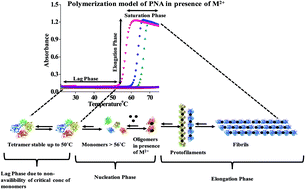
RSC Adv., 2014,4, 53044-53054
https://doi.org/10.1039/C4RA04186K
Role of zinc and copper metal ions in amyloid β-peptides Aβ1–40 and Aβ1–42 aggregation
Conformational structural changes of Aβ1–40 and Aβ1–42 monomers during the interaction of Cu2+ and Zn2+ metal ions.
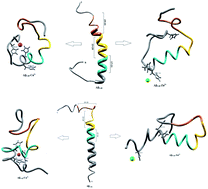
RSC Adv., 2014,4, 38951-38965
https://doi.org/10.1039/C4RA05390G
Exploring structural requirements of leads for improving activity and selectivity against CDK5/p25 in Alzheimer's disease: an in silico approach
A congeneric series of 224 cyclin-dependant kinase 5/p25 (CDK5/p25) inhibitors was exploited to understand the structural requirements for improving activity against CDK5/p25 and selectivity over CDK2.
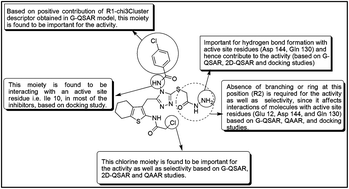
RSC Adv., 2014,4, 6702-6709
https://doi.org/10.1039/C3RA46861E
About this collection
This collection, Guest Edited by Associate Editor Dr. Surajit Ghosh, celebrates World Alzheimer’s month - an international campaign to raise awareness.
Over the past couple of years RSC Advances has published a variety of research which enhances our understanding of neurological diseases such as Alzheimer’s disease (AD). This collections focuses on various aspects of AD including; nanoscience, metabolomics and metal based early detection, surface plasmon resonance, quantitative structure-activity relationship (QSAR) models for better designing of inhibitors, chemical inhibitors, imaging probes, and small molecules for in vivo imaging. We hope this range of significant contributions from various research groups will inspire many researchers working within this field.
To mark world Alzheimer’s month, this collection will be free* to access throughout September.
*Access is free through a personal publishing account.